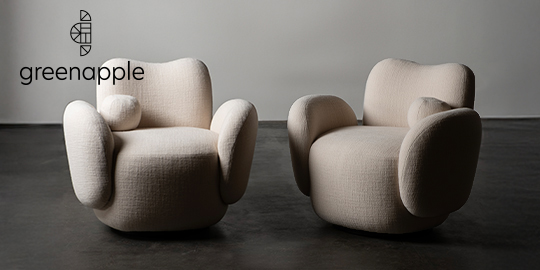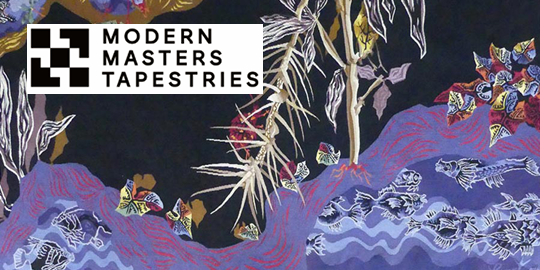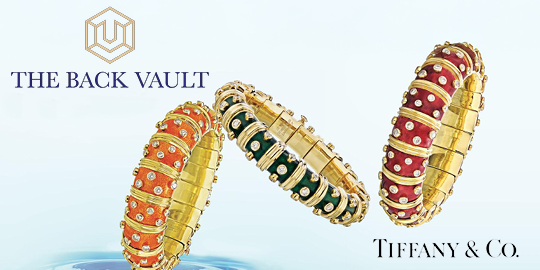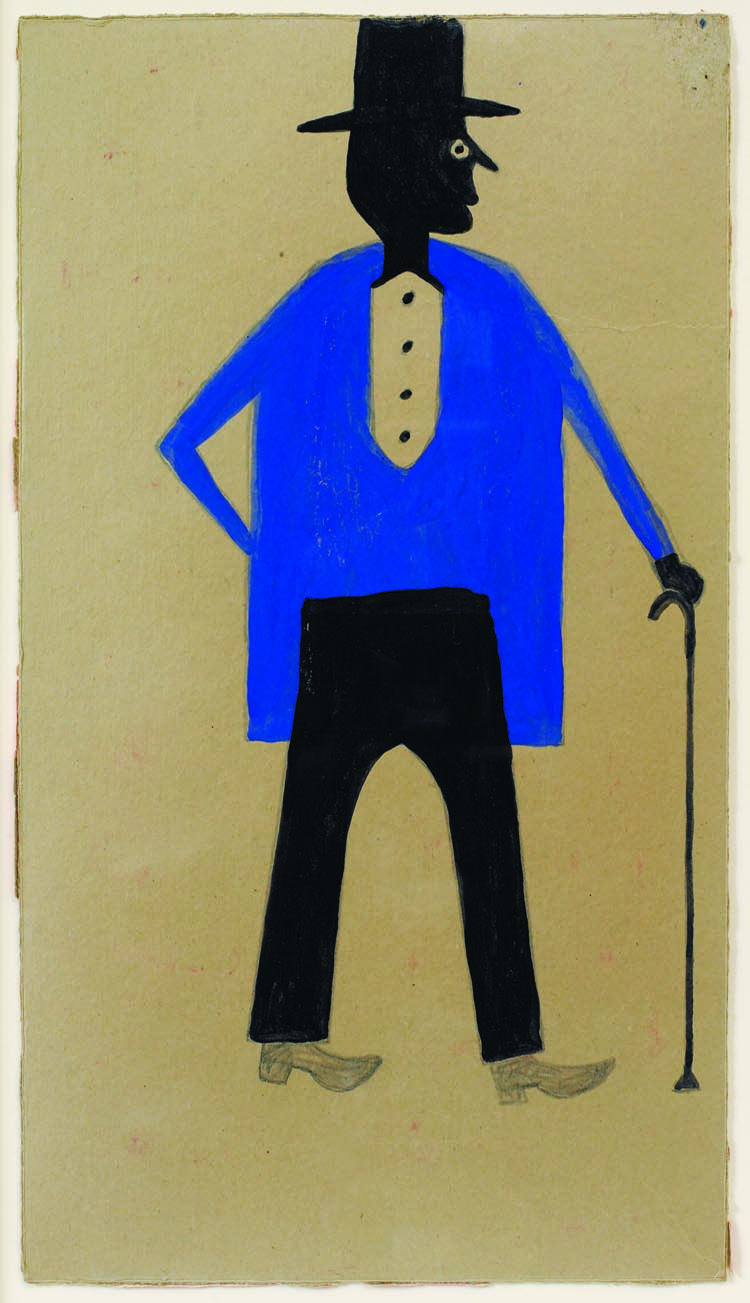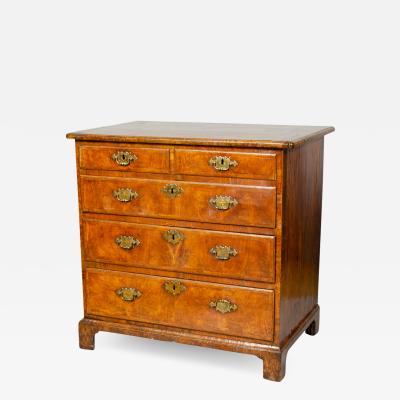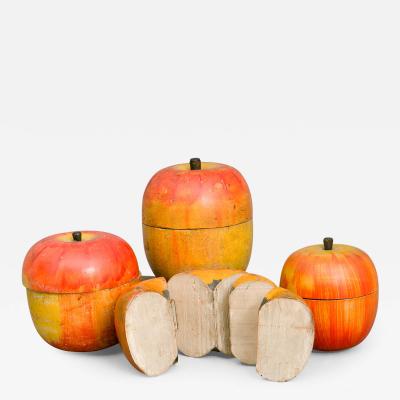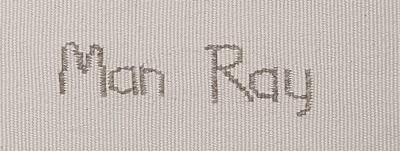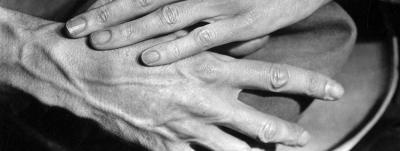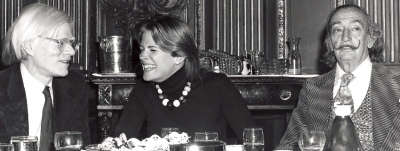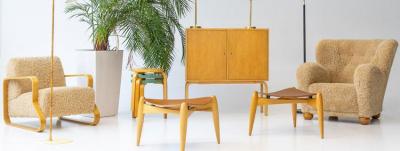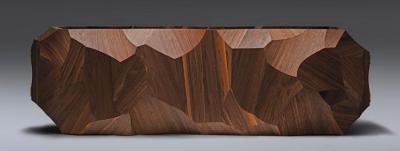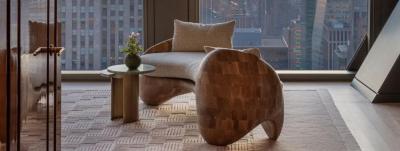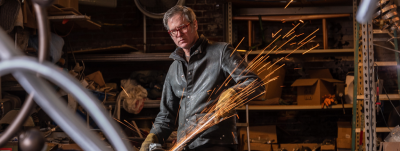The Art of It: The Stellar Folk Art Collection of Jerry and Susan Lauren
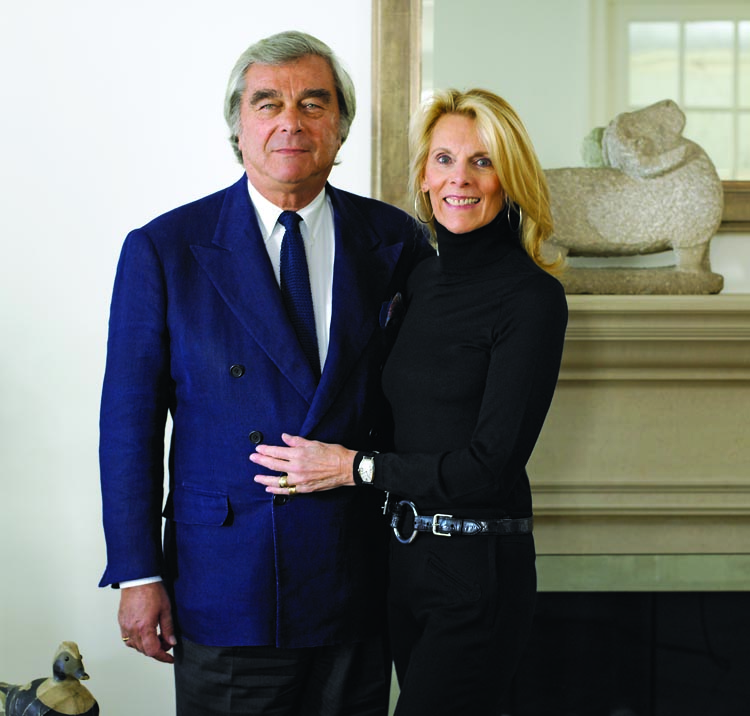
- Jerry and Susan Lauren have an understated elegance, both personally and in the way they have arranged the objects in their Manhattan apartment. On the mantelpiece behind them is a sculpture of a ram by William Edmondson (1870–1951). “Religious symbolism was important to Edmondson,” says Jerry. “He said that his hands were stirred by God to do sculpture. The detail in this work, such as the wool, is amazing.” In front of the fireplace is a 1930s carving of a mother cat and her kitten by John Flannagan (1895–1942). The canvas decoy was made by Lothrop Holmes (1824–1899). Says Jerry of the bird, “It’s a beauty: rugged and a little quirky. It was one of the first decoys we acquired. Little did we know what would follow.”
In his role as executive vice president of men’s design at Polo Ralph Lauren, Jerry Lauren, together with his brother, Ralph, have dictated style and fashion to the world for almost four decades. When it comes to collecting, he applies his discerning eye to the world of folk art. Jerry and his wife, Susan, began collecting antiques some twenty-five years ago. In the early days, when the couple purchased their circa 1780s Litchfield County home, they embarked on what was described as “fun outings to country auctions and fairs.” But their collecting habits took a turn in 1993, when they purchased an apartment in a 1920s building on Park Avenue that offered the views they desired and would suit their growing collection of American folk art.
When it came to furnishing their apartment, Susan explains, “Formality did not dictate our tastes or govern decisions, yet much careful thought went into every choice we made.” She adds, “We have always liked simplicity with a touch of modernism.” All decorating decisions were made to showcase the collection. They selected a monochromatic color scheme of whites and neutral tones and minimal window treatments to bring focus to the spectacular Park Avenue views. Says Jerry, “The windows, which retain their old glass, are sculptural in themselves.” The furniture was chosen to offer comfort and clean lines so as not to detract from the collection: custom-made glass dining and coffee tables virtually disappear, leaving only reflections of light highlighting surrounding pieces. The entire apartment acts as a backdrop, allowing the eye to focus on the objects displayed on stands designed to enhance the proportion and scale of each piece.

- “The windows take up almost the entire wall,” says Jerry. “The morning sun casts a beautiful glow and every dimension becomes more intense; there is a soft light in the evening. It feels good”
He adds, “I love being surrounded by these objects when I walk into the room.” The monumental locomotive weathervane is six feet long and was originally placed above a railroad building. It looks like a giant toy and is well articulated and “folky.” The large wooden rooster weathervane, 1780, and the oldest weathervane in the apartment, was once atop the first courthouse in Portland, Maine.
“The first important weathervane we bought,” says Jerry, “was the Indian at the left of the room. It was one of the most passionate hunts we made. We first saw it at the Winter Antiques Show in New York. We saw it again and had to buy it. There are no missing details, even
feathers are intact. The stance is very regal, confident.” Another Indian in the room (not shown) was purchased the day after one of the couple’s sons was married. A Myer Myers (New York, 1723–1795) silver tankard on the mantel shows bold lines and a strong form.

- The den is fitted with shelves that display painted steel “Buddy L” toys in mint condition. Made in the 1920s, the models include red fire engines, a moving van, dump trucks, and a group of “flivvers,” which are smaller versions of the larger trucks. The group is largely untouched and most retain their original makers’ tags and pull strings. The couple began collecting the toys fifteen years ago when Susan purchased their first Buddy L as a birthday gift for Jerry. Painted black, forest green, and red, only perfect examples are added to their collection. The couple also has three rare Buddy L prototypes, not pictured, discovered in a Buddy L warehouse.
On their journey from fun shopping weekends to serious collecting the Laurens met another couple, respected advisors within the Americana field and now close friends, who imparted their knowledge to help navigate the inside scene of collecting masterpiece material. Now, with a trusted network of friends, scholars, and dealers, the Laurens are formidable connoisseurs. In October of 2006, they set a world record for any one piece of folk art by paying $5,840,000 for the J. L. Mott Indian chief weathervane at Sotheby’s. Dating to 1900, the weathervane is thought to have been a special commission for a fraternal lodge or community institution. For years it stood atop the Gross Pointe, Michigan, home of Josephine, granddaughter of Henry Ford, and her husband Walter Buhl Ford. The weathervane is now displayed in the Laurens’ dining room. It is placed in front of an oversized mirror, which creates a powerful amplified effect. About his purchase, Jerry explains “I couldn’t stop thinking about that piece. I simply had to own it. The entire experience, aside from marrying my wife and the births of my children, was really one of the greatest thrills of my life.” At this point in their collecting the couple say, “We will only go after the best. We are looking for twelves not tens. The object must be the perfect example of that particular form. The art of it has to be exceptional, the condition, mint.”
Many of the objects in their apartment are weathervanes, yet the couple is quick to note that they are not collectors of weathervanes. “It’s all about the form, the architecture, the aging process, and the condition,” says Jerry. “The object has to have its own life.” Adds Susan, “The object has to stand on its own artistically. Rarity and condition also play an important role.” “What we love about folk art,” says Jerry, “is that the objects were not made to be sold as works of art, but were made for a purpose.” “They had a function,” says Susan, “and were made by craftsmen, who were actually masters. This union is what we as folk art collectors are after.”
“Take, for example,” notes Jerry, “the Canadian goose decoy in the living room. Everyone who walks into the room and sees it is stunned. They don’t have to know about carving; it is amazing and a monument to the creator. Yet it is utilitarian. It was a working decoy, with the neck attached to the body by a tongue and groove assembly to make it practical for travel. This piece extends beyond just being a decoy.” He adds, “Every moment, Susan and I look around us and appreciate that we are surrounded by beautiful history.”
The Laurens have included the work of outsider artist Bill Traylor (1854–1949) in their collection of folk art. Traylor, a self-taught artist, was born into slavery on an Alabama farm. Unable to read or write and disabled by rheumatism, Traylor began painting in 1939 at 85 years of age. Homeless, he used the sidewalk and doorways as his studio. Using discarded pencils and poster paint, he drew on almost anything suitable he could find, often settling for cardboard candy or cereal boxes. Traylor was prolific, creating about 1,500 drawings in three years. He depicted the life around him, from the whimsical to the sinister, using a variety of animals, people, and abstract forms. Today, Traylor’s work can be considered contemporary.
Jerry says, “We were initially attracted to the simplicity and innocence of his work. As folk art collectors, we feel his uneducated talent stands out among all artists.” He adds, “Traylor’s life story is rich in American history and he had a lot to say about the world in which he lived.”
It was fifteen years ago when the couple purchased their first Traylor. Just recently they acquired a portrait of a fashionable gentleman dressed in a black frock coat, top hat, and striking electric blue trousers. “This is a very imposing image,” says Jerry. “The colors are brilliant. It vibrates. I compare its visual power to the Indian weathervane, but then, every piece we collect is a love affair.”
When describing their collection the Laurens share the same sentiments. In unison they say, “There is little planning in our collecting. It is a great adventure. You never know what the next discovery will be. The only plan is to get the ultimate treasure.”
In early October 2007, the Laurens received a call about a weathervane from Skinner auctions in Boston, Massachusetts. Without hesitation they drove four hours to see it for themselves. “From the first phone call I could tell it had the heartbeat of a masterpiece,” Jerry remembers. “When we actually saw it, we knew we had seen nothing like it.” The molded copper touring car with driver was made, circa 1910, by W. A. Snow Iron Works Company of Boston. Susan noted that it would be a wonderful addition to the collection and on Sunday, November 4th (Jerry’s birthday), the couple purchased the masterpiece as a gift to Jerry. “The Laurens’ enthusiasm is great. They truly love perfection,” says Stephen L. Fletcher, executive vice president and director of American Furniture and Decorative Arts at Skinner, who adds, “Sculpturally, this vane is one of the top we have ever handled. The driver is beautifully figured and molded from his face to his foot, which presses down hard on the accelerator, giving new meaning to the phrase ‘pedal to the metal.’ The details and elements of the car itself, from the horn to the lights are exceptional.”
Artistic merit expands beyond the objects in the couple’s collection to the creative thread that runs through the family. In the den, there is a sketch by Jerry, done in January 1962, of Nobel Prize winning author and philosopher Bertrand Russell. On the opposite wall hangs an abstract acrylic on canvas, titled Women in Navy, painted by daughter Jenny Lauren in 1993. Three-dimensional paintings by son Greg, who actively shows and lives in Los Angeles and New York, are located in several of the rooms. Their other son, Brad, demonstrates his artistic skills in the culinary world in Manhattan.
In summarizing their collecting, Jerry says, “It’s not about having a lot. It’s about collecting the best forms. We are trying to keep the apartment minimal, but if something special comes up we have to have it.” When describing the objects — from decoys to toy trucks — Jerry often says, “It’s the art of it — the art in these masterpieces that separate them from the mundane.” The Laurens’ folk art collection exhibits the stunning results of their passion for excellence.
This article was originally published in the 8th Anniversary issue of Antiques & Fine Art magazine, a fully digitized version of which is available on afamag.com. AFA is affiliated with Incollect.com.





